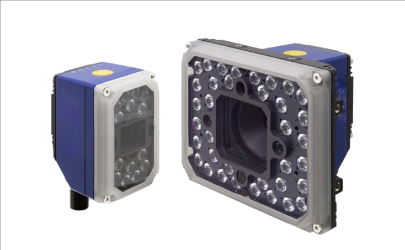What Makes Modern Fixed Scanners a Game Changing Investment for High Volume Operations

Rising adoption of stationary industrial scanners across diverse applications is creating numerous high-value opportunities as industries progress toward connected operations, traceability, and intelligent automation. A particularly strong opportunity exists in the retail and e-commerce sectors, where the expansion of omni-channel models necessitates improved inventory accuracy, expedited fulfillment cycles, and reliable product identification across warehouses and storefronts. The growth of micro-fulfillment centers, same-day delivery commitments, and automated sortation hubs is driving demand for high-speed fixed scanners capable of reading damaged, irregular, or densely packed barcodes with minimal errors. Companies can capitalize on this demand by offering scanners equipped with enhanced depth of field, faster decode rates, and AI-driven image enhancement specifically designed for high-movement retail environments.
In the transportation and logistics sector, rising cross-border trade, warehouse automation, and increasing throughput requirements are opening new avenues for rugged fixed scanning systems suited for conveyors, parcel hubs, and freight terminals. As global parcel volumes rise, logistics operators are prioritizing systems that seamlessly integrate with routing engines, dimensioning tools, and tracking software. Suppliers that introduce scanners with intelligent routing signals, continuous uptime monitoring, and multi-code reading capabilities in dense environments will gain a competitive edge.
The industrial manufacturing sector also presents significant opportunities as factories continue their transition to data-centric operations. The growing emphasis on production traceability, quality assurance, and error-proofing is fueling interest in fixed imaging systems capable of capturing defects, verifying labels, and authenticating components at machine speeds.
Vendors can create value by providing scanners that integrate with MES systems, offer configurable inspection templates, and support edge processing for latency-free decision-making. Aerospace, automotive, and electronics production are particularly attractive entry points due to their stringent compliance requirements and increased use of robotics. As manufacturers invest in modern conveyor systems, autonomous mobile robots (AMRs), and robotic arms, demand increases for embedded scanners designed for compact spaces and irregular mounting angles.
In healthcare and life sciences, strong opportunities are emerging due to the expansion of digital transformation programs in hospitals, laboratories, and pharmaceutical supply chains. The increasing focus on specimen traceability, patient record automation, and medication authentication is driving demand for fixed imaging solutions installed in diagnostic platforms, pharmacy automation units, and blood processing lines. Companies entering this market can differentiate themselves through advanced optical systems capable of reading small data labels, secure serialization formats, and high-contrast codes used on medical vials and sample trays. Additionally, pharmaceutical packaging lines present a promising area, as serialization compliance and anti-counterfeiting efforts intensify.
The food and beverage processing sector is also unlocking significant opportunities due to a heightened focus on contamination prevention, allergen tracking, and compliance with global food safety standards. Production and packaging facilities are increasingly incorporating fixed scanners to validate batch codes, track raw materials, and verify packaging integrity. This opportunity expands as companies seek solutions designed to withstand washdown cycles, extreme temperature shifts, and continuous high-throughput operations. Suppliers that provide hygienic scanner designs with ingress protection, antimicrobial surfaces, and stable performance under varying humidity levels can establish a strong market presence.
The hospitality sector presents a different but growing opportunity as hotels, entertainment venues, and travel operators expand self-service kiosks, automated check-ins, and digital ticketing. These settings require compact fixed scanners capable of processing a wide range of passes, digital QR codes, and payment tags with quick response times. Vendors that develop aesthetically refined scanners suitable for customer-facing environments are well-positioned to capture this niche market.
Across all applications, a broader opportunity is emerging from the increasing demand for integrated data ecosystems. Operators are moving beyond standalone scanning devices and seeking systems that deliver actionable insights. This shift is generating demand for scanners that connect seamlessly with cloud dashboards, provide performance analytics, and support proactive maintenance alerts. Companies that invest in software-rich scanning platforms built around remote monitoring, device orchestration, and secure firmware updates will be well-positioned for success. Furthermore, as cybersecurity becomes a priority across sectors, offering secure communication frameworks and encrypted data pathways represents an attractive entry point.